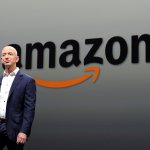Cloud companies post big revenues, smaller profits in Q1 2021

The Amazon earnings call on Thursday last week revealed a 30% jump in revenues for AWS compared to the same quarter the previous year, amid US$108.5bn in sales for Amazon as a whole in 2021, with AWS’s income forming over 10% of that total, at US$13.5bn.
The company’s CFO Brian Olsavsky said he expected AWS to bring home US$54bn in total revenues by the end of the financial year in a call that largely satisfied investors keen to hear positive news from the internet and retail giant.
The overall growth in both cloud computing and retail was put down to the COVID-19 epidemic, during which organizations have been increasingly adopting cloud computing more rapidly than expected. Companies that were thought to be transitioning more slowly, accelerated their plans as central data centers owned or leased by larger businesses became more difficult to physically attend for maintenance and upgrade. AWS’s expansion rate is down only a single percent, from 33% to 32% growth compared to last year, but it still dominates the cloud industry, ahead of competitors GCP, Azure, Oracle, and IBM.
Old stalwart IBM has also performed strongly this year to date, with $4.9bn cash generated from its Q1 activities, primarily driven by its Hybrid Cloud activities and use of its cloud services for AI, as well as the Watson service. The company’s total operating income for the quarter totaled $18.6bn. That figure includes monies from its IT services and support division, AKA “Global Technology Services,” which is due to be hived off from the IBM juggernaut this year, and will float as a standalone entity on the NYSE.
The new company, which will operate independently, is to be called “Kyndryl,” a name that “evokes the spirit of true partnership and growth,” according to Martin Schroeter, the company’s CEO. The marketing fluff claims the made-up word is a combination of (a presumably deliberately misspelled) “Kin” and “Dril,” where Dryl pertains to “tendril,” which – bear with us – brings to mind “new growth” and how the company will “work towards advancing human progress,” a company press statement said.
When the separate entity floats later this year, its revenues will be removed from IBM’s earnings figures in subsequent publications – a significant subtraction that will place AWS’s activities alone (separate from Amazon) as more lucrative than Big Blue’s.
Meanwhile, Google’s Q1 statements showed Google Cloud Platform announcing $4.04 bn in sales for the quarter, up 46% from the same quarter a year ago. That revenue, however, represents the front end of nearly a billion dollars loss ($974m). Google and its parent entity, Alphabet, recognized that the cloud service platform is an ongoing investment, funded by more lucrative activities such as Google Ad and Search. It is expected that economies of scale will begin to slow down the rates of loss for GCP, reducing the entries in red on the Google accounts sheets. The losses were in line with a slowing rate of loss: 2020 saw a $1.73bn negative figure for GCP’s activities.
What is becoming increasingly clear is that services such as cloud computing yield significantly more revenues than pure hardware and software sales from more traditional vendors: AWS is set to grow to be larger than Lenovo [PDF] at some time later this year, for example, if its growth predictions hold true.










